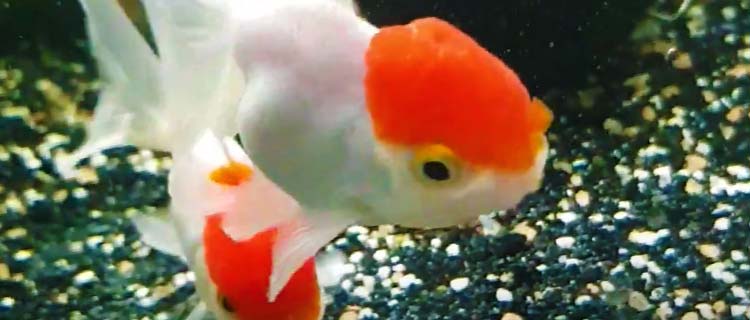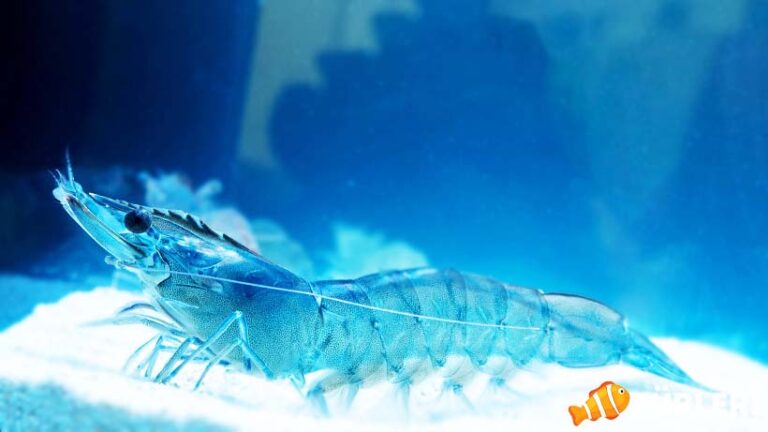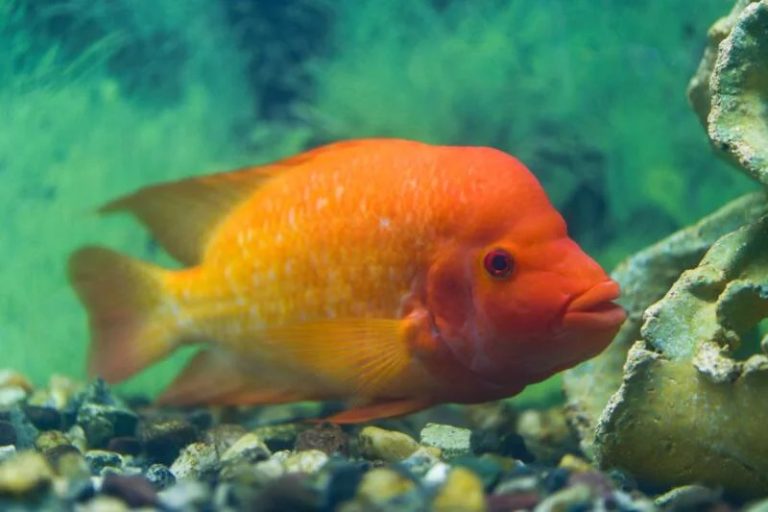Everything About Telescope Fish – A Guide
The telescope fish is a freshwater Japanese fish species that stands out with its large, unusually bulging eyes. If you’re thinking of getting a telescope goldfish, you’ll find everything you need to know about them in this guide.
These fish possess black and brown colors during their juvenile stages, but can exhibit a wide range of colors as they mature.
Even if you’re just starting out and have no experience with aquariums and fish, this easy-to-care-for fish is a suitable species for you. Continue reading for details about their characteristics, gender, diseases, care, and all other essential information.
Telescope Goldfish Species Summary
| Scientific Name: | Carassius auratus auratus |
| Origin: | Asia |
| Diet: | Omnivore |
| Behavior: | Peaceful |
| Behavior Towards Its Own Species: | Peaceful |
| Swimming Area: | Bottom and middle |
| Water Temperature: | 16 – 24 °C |
| Water Hardness: | 4 – 20 GH |
| pH Level: | 6.4 – 8.0 |
| Minimum Aquarium Size: | 50 Liters |
| Adult Size: | 20 cm |
| Reproduction: | Egg-layers |
| Lifespan: | 6 – 20 years |
| Care: | Easy |
Characteristics:
Telescope goldfish have bulging, protruding eyes, which is the characteristic feature that gave them their name. This goldfish species, scientifically called Carassius auratus auratus, was first identified in China in the early 1700s.
When they were first identified, they were named “Dragon Eye”, but after being sent to Japan, they acquired the name telescope-eyed goldfish.
Appearance And Behavior:
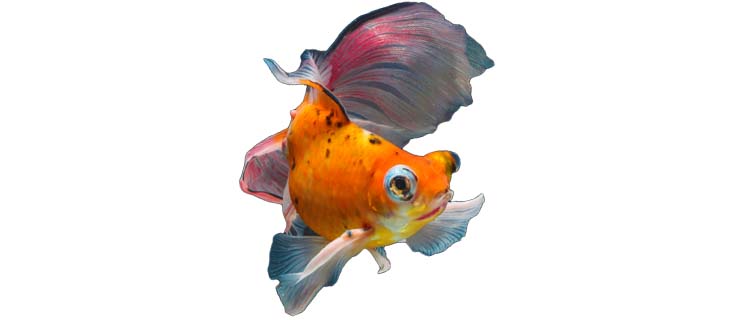
The development of their famous telescope eyes takes around 6 months. Up until that time, these fish have normal-sized eyes. However, once they reach the age of 6-7 months, their eyes begin to protrude. By the time they mature, their eyes have fully developed into their unique shape.
In adulthood, they can reach a size of 20 cm. However, it has been observed that some goldfish kept in ornamental ponds can grow up to 30 cm. They have an egg-shaped body.
Not only do they have unique eyes, but they also boast beautiful colors, patterns, and tail shapes. The most common type is the black butterfly tail telescope goldfish. As other goldfish species can also develop telescope eyes, there may be many varieties.
In addition to these features, they can appear in red, blue, brown, white, tricolor, and bicolor. Their scales are usually metallic, but on rare occasions, they can have matte scales.
Like most goldfish species, the telescope-eyed is very peaceful and docile. They show no aggression towards their own kind or other species in the aquarium (though they might eat their own fry).
Natural Habitat:
Native to Central Asia, these fish have been distributed all over the world, primarily in China and Japan. In their natural habitats, they live in cool and calm waters, specifically in lakes and rivers where the current is slow.
They usually spend most of their time among rocks and the roots of plants. To provide them with the best aquarium setup and ensure their longevity, their natural habitat should be mimicked.
Sexual Dimorphism:
Determining the gender in goldfish isn’t difficult. However, determining the gender in juvenile stages is very challenging and can be misidentified. It’s best to wait until their breeding season for accurate determination.
For the most accurate gender identification, you can check the following:
- The sides of the male fish are slimmer compared to the female, whose belly is closer to an egg shape.
- Male fish develop white, spine-like spots on their gill covers during the breeding season.
- When viewed from above during breeding seasons, females appear swollen on the sides, possibly due to being full of eggs.
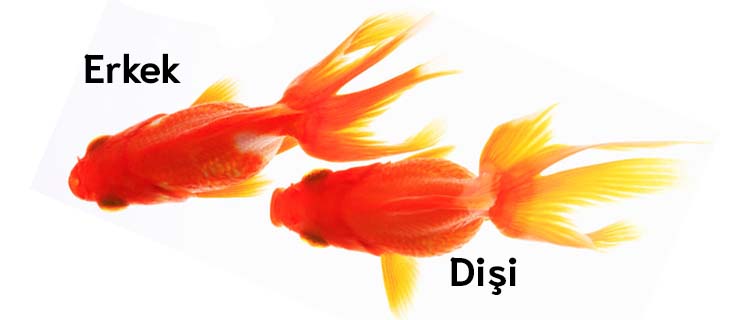
Which Fish Can They Live With?
Before adding fish to the telescope goldfish’s environment, you must consider certain points. Goldfish are slow and cumbersome swimmers, but the telescope goldfish is even more so. Moreover, their vision is weaker than other goldfish. Their big, bulging eyes can be deceiving in this regard.
The best choice for them would still be another goldfish species. Suitable companions include sky goldfish, pouch-eyed goldfish, lionhead goldfish, and fan-tailed goldfish.
Since these fish swim slowly, they might not be able to reach their food in time. Hence, keeping them with fast-swimming, agile fish species or aggressive species like cichlids would be a mistake. If you still want to introduce different species, we have a few more suggestions:
- Butterfly loach
- Panda Cory
- Apple snail
- Otocat fish (otocinclus affinis)
Black Telescope-Eyed Goldfish Care:
Taking care of telescope goldfish is straightforward, and you can be assured they won’t be too demanding. As long as you maintain the necessary water conditions, you can create any aquarium design that pleases you. You can provide them with a well-decorated environment, either planted or simply adorned with rocks.
Aquarium:
First and foremost, these fish cannot be kept in a bowl (excluding spineless species, no fish should be kept in bowls). Due to their sedentary nature and slow swimming habits, they don’t require large aquariums. However, since their adult size can reach up to 20 cm, they should be kept in an aquarium with a capacity of at least 50 liters or more.
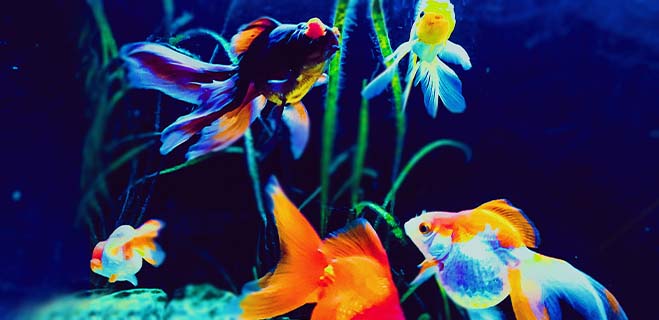
This volume is for a single telescope goldfish. If other fish are to be added, the volume should be increased to an appropriate level.
One of the most important points to consider when setting up an aquarium is filtration. Many goldfish can quickly dirty the water. Therefore, you should use a quality filter that can filter well and is suitable for the volume of the aquarium.
Since the waters it’s found in its natural habitat are cool (even sometimes cold), you don’t need to use a heater. However, if you are going to add different species (as mentioned above), you must definitely consider the required water temperatures for those species.
If you can create enough waves on the surface of the aquarium to provide the necessary oxygen, you don’t need an air pump either.
Decoration and the ground is up to your imagination. You can decorate with rocks, various aquarium-friendly roots, and natural materials. For the ground, you can use fine sand or pebbles that won’t get stuck in the fish’s mouth.
Lastly, if you’re setting up a planted aquarium for your telescope, you should definitely choose plants suitable for goldfish. These should not be plants with thin leaves, thin branches, and that are fragile or delicate.
Water Values
Except for a small subset of Japanese species, all are suitable for living in cool, cold waters. Some have even been observed surviving in ornamental ponds with ice-covered surfaces, taking shelter by plant roots.
The ideal water temperature for telescope goldfish is between 16 – 24 degrees Celsius. If it needs to be kept at a steady value, 19-20 degrees is suitable (be careful if you have other species in the aquarium that are sensitive to cold water).
The appropriate pH level is between 6.4 and 8.0. Tap water in Turkey meets this value. To keep the pollution under control and the aquarium clean, you should change 25-30% of the water and vacuum the substrate weekly. Let the water you add sit for at least a day to let the chlorine evaporate.
Feeding And Foods
Goldfish are omnivorous species. They can consume both plant-based and meaty foods. There is a wide range of food options available. You can use quality flake, pellet, and tablet foods produced for goldfish.
In addition, if you occasionally provide frozen and live food, you can be companions for many years. They will gladly consume water fleas, bloodworms, brine shrimp, and worms.
How Should Telescope Goldfish Be Fed? To avoid digestive system problems, you should definitely avoid overfeeding. The best feeding method can be twice a day, in the morning and evening.
To ease your fish’s digestive system, you should also provide vegetables like pumpkin, cucumber, and peas 1-2 times a week.
How Much Food Do They Eat?
Regarding how much to feed; half a teaspoon of food will be sufficient. When you give the food, monitor your fish and see if it finishes the food in 2-3 minutes.
If it doesn’t finish the food in this time, it means too much has been given. The next time, reduce the amount slightly to adjust the necessary feed. Overfeeding will harm not only the fish but also the aquarium water. Therefore, you need to be careful about feeding.
Reproduction
Telescope goldfish reproduce easily once they enter their breeding period. If your fish are in this period but are not breeding, it means there is not enough space in the aquarium.
Reproduction can last between 2-3 hours, and during this process, the female can release thousands of eggs. The number of eggs varies depending on the female’s maturity and how many times she has laid eggs before.
After the female releases the eggs, the male will fertilize them, and in an average of 5 days, the fry will start to emerge from their sacs.
Telescope Goldfish Breeding
Whether you are experienced or not, breeding telescope goldfish is quite easy when the right conditions are provided.
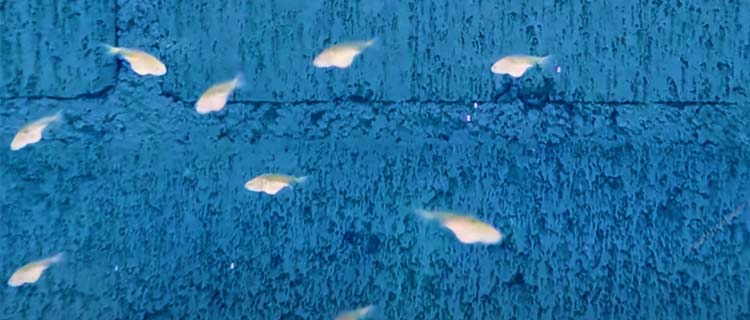
Telescope goldfish breed in wild environments during the spring season. Therefore, the best thing to do is to mimic these conditions. Goldfish eggs are sticky and remain where they fall.
After mating, both the female and male fish can eat the eggs. For this reason, using artificial plants or spawning mats would be a good idea. This way, collecting the eggs becomes easier.
We have a few suggestions to encourage the fish to mate and spawn:
Separate the female and male fish for a few weeks and place them back in the same aquarium when it’s time for breeding.
Gradually increase the cooler water temperature by 1-2 degrees daily until it reaches 24-25 degrees Celsius. Increase feeding from twice to three times a day.
Diseases While telescope-eyed goldfish are generally hardy, they are sensitive to certain diseases. Eye diseases are at the top of this list. Secondly, they can suffer from infectious diseases.
To avoid such diseases, it is essential to maintain the necessary aquarium care and ensure clean water.
Why Do They Die?
Many diseases can cause death. Eye diseases and infectious diseases are the most common causes.
To recognize disease symptoms in your telescope fish, to learn why they died, and to take precautions, refer to: Common goldfish diseases.
Why Does Telescope Goldfish Sink to the Bottom? Generally, this kind of behavior indicates a swim bladder issue. When there’s a problem with the fish’s swim bladder, they can’t regulate their swimming level and will flounder aimlessly in the water.
FAQs
Can a Telescope Goldfish Live with a Goldfish?
Yes, the telescope is actually a type of goldfish and can be kept with many others.
Can a Telescope Goldfish Live in a Bowl?
No, it cannot be kept. Contrary to what pet stores say, no goldfish, including telescope, should be kept in a bowl.
How Long Does a Telescope Goldfish Live?
Depending on the environment provided, water conditions, and care, the lifespan of a telescope goldfish ranges between 6 to 20 years.
Does a Telescope Goldfish Change Color?
Yes, it can change. If your fish is young, as it reaches adulthood it may evolve from a black color to lighter shades. Additionally, if adult fish are changing colors, it could indicate illnesses, inappropriate lighting, or poor water quality.



